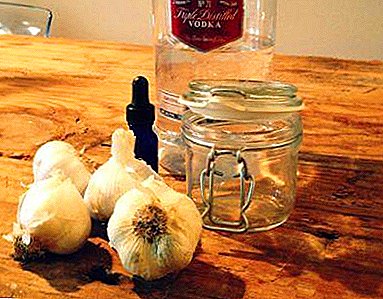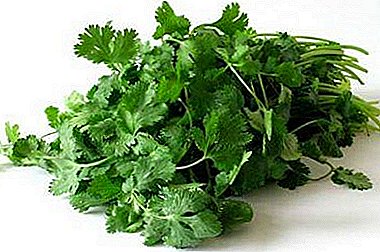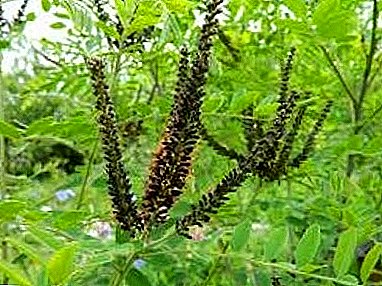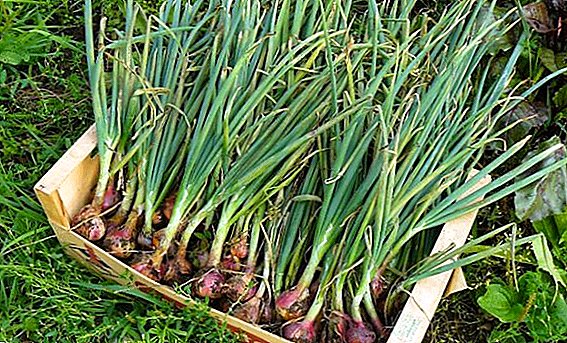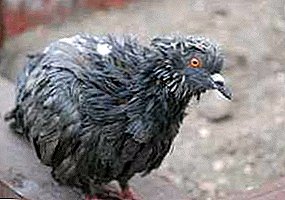
Although unofficially ornithosis is called the "parrot's disease", because decorative birds are exposed to it more easily than others, it can also kill larger and seemingly more powerful domestic birds: chickens, ducks, geese, turkeys — only about 200 species.
The particular danger of ornithosis, also called infectious pneumonia, psittacosis and chlamydia, in the ability of its causative agent to persist in the environment for a long time (in bird nests and litter - several months, in tap water - about 2-3 weeks), as well as airborne and air and dust routes penetrate into the human body.
People can become infected with ornithosis only and exclusively from birds. People who are professionally involved in bird care or carcassing workers are the first to be at risk.
What is ornithosis in birds?
 For the first time ornithosis was discovered in 1879 and was named psittacosis (from "psittacidae" - the family of parrots), since the budgerigars were most often the carriers of the virus.
For the first time ornithosis was discovered in 1879 and was named psittacosis (from "psittacidae" - the family of parrots), since the budgerigars were most often the carriers of the virus.
However, upon further study of the virus and its effects on birds, the disease caused by it was renamed to chlamydia, since the virus belongs to the chlamydia family and not only parrots can be infected.
In 1942, after re-examining the virus and the effects it causes on an infected bird, K.F. Mayer suggested using another name, by which we now know this disease - ornithosis (Ornithos - translated from Greek means "bird").
It should be noted that during this rather long period, ornithosis remained one of the most common diseases causing shock to the owners of poultry farms, because the geography of the virus is the country in which the poultry farming is most developed.
Causative agent
 The chlamydia virus from the family provokes ornithosis in birds, breeding in tissue cultures.
The chlamydia virus from the family provokes ornithosis in birds, breeding in tissue cultures.
The virus is capable of infecting not only adult birds and not only young animals, it is well established in fertilized eggs, infecting 6-9 days old embryos.
After that, naturally, these embryos will no longer be destined to become chicks, but clinical material is obtained from them, with the help of which the laboratories of veterinary clinics study the nature and effect of the ornithosis virus.
The source of infection most often becomes sick individuals, which during the latent (latent) period of the disease have time to infect more than one of their relatives.
The virus is released from a sick bird during sneezing or coughing with secretion.. By contaminating plumage, bedding and feed, an infected bird disperses the virus into the environment, endangering all inhabitants of the house.
It is possible infection by contact - through damaged skin in birds and during peklevyvaniya (such an incomprehensible human ritual can most often be observed in chickens, when they peck something from each other from the feathers or peppery the remnants of food).
But during the active action of chlamydophilia, this harmless chicken occupation becomes dangerous for birds and carries the threat of infection of the entire herd.
 The breed of chicken Fireball attracts poultry farmers with its meat characteristics. These chickens are able to gain weight very quickly!
The breed of chicken Fireball attracts poultry farmers with its meat characteristics. These chickens are able to gain weight very quickly!Following this link: //selo.guru/ptitsa/kury/bolezni/k-virusnye/infektsionnyj-laringotraheit.html, you can learn everything about laryngotracheitis in chickens.
A positive moment in the nature of the virus is its inability to withstand high temperatures. It collapses in 3 minutes when boiling and in 10-15 minutes when heated to 800.
Clinical signs
 The common signs of poultry ornithosis are very similar to those of other common avian diseases.
The common signs of poultry ornithosis are very similar to those of other common avian diseases.
The bird loses its appetite and interest in life. The lethargy, apathy, desire of the feathered pet to sit alone in the side should alert the poultry farmer in the first place.
After the first signs, the following occur: loose stools, wheezing, conjunctivitis.
Symptomatology
 Symptoms of ornithosis in birds are very diverse, which often misleads even experienced poultry farmers: in one individual, except for a few drops of mucus from the nose, nothing happened, and the other, outwardly looking healthy, died in a few days.
Symptoms of ornithosis in birds are very diverse, which often misleads even experienced poultry farmers: in one individual, except for a few drops of mucus from the nose, nothing happened, and the other, outwardly looking healthy, died in a few days.
It all depends on the strain of the virus., from the age and state of bird immunity, well, and, to some extent, from the season - the autumn-winter period, in addition to cooling, is also known for its ability to weaken the protective properties of the organism in some representatives of feathered fauna.
Ornithosis in poultry occurs in one of two forms: either it is an acute or chronic disease.
Duck family during the period of "rampant" ornithosis is at risk of losing up to 30% of the young. Indeed, 3-30-day-old ducklings are most prone to this disease.
Turkeys with ornithosis develop anorexia, hyperthermia and cachexia.. Females dramatically reduce egg production, birds have hoarseness and voice changes.
Chickens of all ages were the most resistant to the virus. Ornithosis in representatives of the chicken family, as a rule, proceeds latently and very quickly.
Adult chickens with this disease sneeze and diarrhea, in chickens (in some cases) the liver may increase and complications in the form of fibrious epicadrite occur.
Acute phase
Symptoms:
- breathing problems (noise during inhalation and exhalation, runny nose, shortness of breath, sinusitis);
- diarrhea and dehydration;
- excess urine;
- poor thirst quenched;
- lack of appetite;
- disheveled and unhealthy look.
Chronic form
Symptoms:
- convulsions;
- unnatural position of the head;
- tremor;
- paralysis of the legs (full or partial).
Additional (possible) symptoms: the bird becomes surprisingly obedient, very thin, it starts having problems with its beak and nails (brittleness, softness), sneezing, eyes swell.
Diagnostics
The diagnosis is made according to the results of the analysis of bird droppings, goiter scrapings, and mucosal swabs.
For a preliminary home diagnosis, it suffices to note several symptomatic features characteristic of ornithosis.
Treatment
 Starting the treatment of ornithosis in poultry, you should adjust yourself to the fact that the process may be protracted, not always effective and dangerous to human health.
Starting the treatment of ornithosis in poultry, you should adjust yourself to the fact that the process may be protracted, not always effective and dangerous to human health.
But still trying to save livestock stands, applying tetracycline antibiotics and constantly mixing calcium into the feeders.
In industrial poultry farming, all infected poultry, according to veterinary standards, are destroyed. In the home - it is possible to isolate sick individuals, and with healthy ones to carry out maximum preventive measures.
But even in small poultry farms, numbering several dozen heads, it is necessary to assess the degree of value of the infected bird, and then proceed to treatment. Again: the treatment may take too long in time and not bring the desired results.
In advanced cases, starting treatment does not make sense.
Prevention
 The first and important condition for the implementation of preventive measures is to prevent contact between poultry and wild birds.
The first and important condition for the implementation of preventive measures is to prevent contact between poultry and wild birds.
On large poultry farms, the system includes measures for the destruction of wild birds flying on the territory.
In the prevention of ornithosis necessary avoidance of dust in the house, compliance with sanitary standards of poultry, aerosol disinfection of not only poultry farms, but also of the herd itself, control over the condition and quality of water.
From bird to man
In the previous sections, we have already mentioned that ornithosis manifests its perfidy not only by destroying the bird's body, it can also bring a lot of harm to humans.
When caring for sick poultry, take all precautions - work only with gloves and a mask. Use one-time protection measures and destroy them after each visit to infected birds.
If you understand all the hopelessness of the situation of an unfortunate sick duck or chicken, find the strength to destroy the bird, despite its value - so there are more chances to save the rest of chicken lives and your health too.


